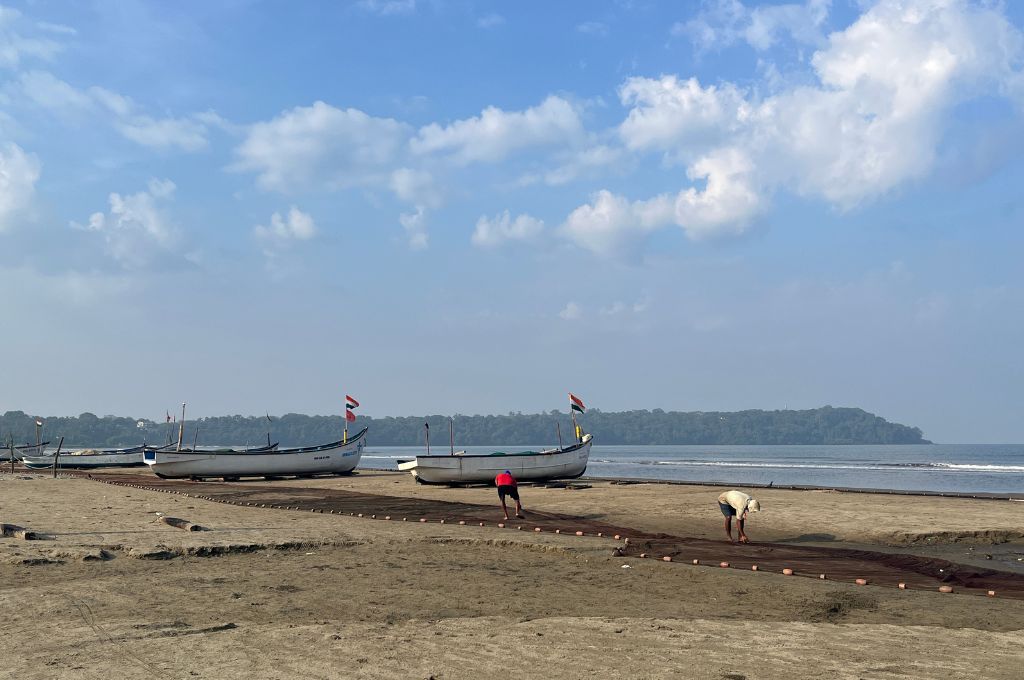READ THIS ARTICLE IN
Feeling the heat: Climate change and Ahmedabad’s stone-pasting workers
Sheelaben is a resident of Patad Nagar, Ahmedabad. She lives in a two-room house, and uses one of these rooms to do stone-pasting work on blouses and skirts. It takes her two–three hours to complete one blouse piece, on which she earns INR 15–25 depending on the amount of work the garment requires. The work, provided by a contractor, is inconsistent.
The festive season, especially the time of Navratri, plays a crucial role in determining how much work she receives. “I work till 12 in the night before the festival season. We have extra orders in hand and it’s the time when we can actually make some savings for ourselves.”
It is not easy for Sheelaben to work in the confined space of her house. Many workers like her live in informal settlements, where the roofs and walls are often not permanent and there is a lack of crucial services and amenities. For example, poor drainage systems lead to waterlogging inside the house during the monsoons, damaging the raw materials as a result.
The rising frequency of extreme weather events, along with climate change, directly affects her house, and, as a result, her work. “Our roof is made of asbestos, and so it absorbs a lot of heat. Sitting inside becomes difficult, but we still have to work. I can’t afford to compromise on the crucial income from my work,” says Sheelaben. Excessive heat inside the house affects the efficiency of her work. This involves shifting around and working late into the night when it is cooler.
Working during the monsoon is also challenging as the glue takes more time to dry and the dampness in the house causes damage to the garments. The absence of sewer pipes in the area leads to water seepage, which also limits work. “I take a break during the monsoons as it causes more material damage than profit. This also decreases my credibility with the contractor,” adds Sheelaben.
Maltiben, another woman from Patad Nagar who does the same work, says, “In the afternoons, women in our neighbourhood who make maalas (beaded necklaces) occasionally sit in the community temple or on shady streets to work. But we can’t do so as it’s not easy to take the pieces from one place to another. Once pasted with stones, the garment has to be placed straight for drying.”
Other women in the locality are engaged in work such as maala-making, tailoring, and spoon packaging. Rukminiben makes maalas even though it pays less than stone-pasting work. She says, “Stone pasting is not for everyone. Where will I dry the garments? I don’t have space to sit and work at my house.”
Anuj Behal is an urban researcher and practitioner.
—
Know more: Learn how renewable energy projects set up in Jaisalmer’s common forest areas are damaging its biodiversity and the livelihoods of local livestock farmers.
Do more: Connect with the author at [email protected] to learn more about and support his work.




